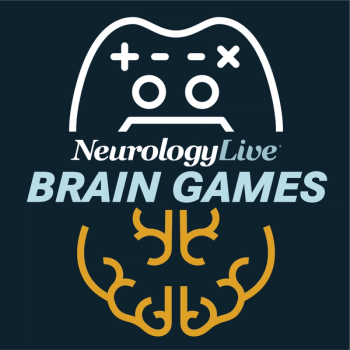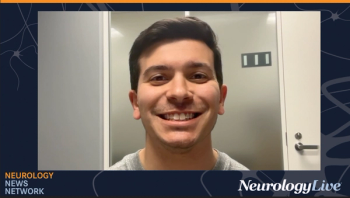
NeuroVoices: Andrew Varga, MD, on Debating Whether Brain Cleansing Prevents Alzheimer Disease
Key Takeaways
- The glymphatic system clears neurotoxic proteins during sleep, potentially affecting Alzheimer's disease progression.
- Experts debated whether sleep disruptions hinder brain cleansing, contributing to Alzheimer's disease.
The neuroscientist and physician at Mount Sinai explored the role of sleep-dependent brain clearance in Alzheimer disease and how emerging research is challenging longstanding assumptions.
Brain cleansing refers to the brain’s natural process of clearing metabolic waste and neurotoxic proteins during sleep, primarily through the glymphatic system. This system relies on cerebrospinal fluid flowing through the brain’s interstitial spaces–especially during slow-wave sleep–to remove substances like beta-amyloid and tau, which are linked to neurodegenerative diseases like Alzheimer disease (AD).
At the
As part of a new iteration of NeuroVoices, Varga provided commentary on both sides of the debate, as well as the historical evidence that suggests sleep promotes waste clearance in the brain. In the discussion, he gave insights on how newer studies propose wakefulness may play a greater role in this clearance, as well as what the landscape looks like for measuring brain clearance in humans. Furthermore, he touched on emerging therapeutic strategies to enhance glymphatic function, and how ongoing research is exploring complementary mechanisms as potential contributors to AD risk.
NeurologyLive: For our audience, can you provide an overview of your talk and why this was a topic of interest for you?
Andrew Varga, MD: I think it starts with the idea that brain clearance happens during sleep. It's thought to be cleared through what's called the glymphatic system. The idea is that when we enter sleep, neurons shrink in size, opening up the interstitial space around them. That helps clear out waste products and toxins—things like beta-amyloid, which is relevant for Alzheimer’s disease. People have thought for a while that this is one of the functions of sleep that might help prevent Alzheimer’s progression. If you have sleep disruptions, like apnea, that can interfere with proper clearance and potentially lead to amyloid buildup.
There was a paper about a year ago that suggested the opposite—that wakefulness might be when most clearance happens and that it’s actually reduced during sleep. So that’s part of the current debate: is this a sleep-active or wake-active system?
As a society, are there ways in which we can evaluate and assess how much brain cleansing is actually going on in patients? Is this something that's feasible?
It's definitely more established in rodents, where you can directly measure many of these processes. In people, we rely more on proxies. Certain imaging techniques can help, but the best methods are invasive. For instance, some studies involve introducing dye into the spinal fluid using a lumbar puncture. You can then observe how that dye circulates and how sleep disruptions might affect it. There are also some non-invasive markers, but they’re really just proxies at this point and not widely used clinically.
That said, more non-invasive approaches are emerging. They’re still quite novel and not ready for routine clinical use, but it’s an evolving field.
Is there any way we can actually have an impact directly on the glymphatic system and potentially lower patients’ risk of Alzheimer’s or other diseases?
Yes. First, it’s essential to focus on getting good sleep—both in terms of duration and quality. Make sure sleep disorders like sleep apnea or insomnia are identified and treated. Beyond that, interventions fall into a few buckets.
There’s pharmacology—some medicines enhance slow-wave sleep, also called N3 or deep non-REM sleep. That stage was originally thought to be key for glymphatic clearance. While we don’t yet know if those drugs specifically enhance clearance in humans, it’s a theoretical possibility. Another class is the dual orexin receptor antagonists, or DORAs. They’re used for insomnia but also help with general sleep fragmentation and have shown some potential neuroprotective effects in Alzheimer’s disease.
There are also technological interventions: transcranial magnetic or electrical stimulation, closed-loop acoustic stimulation that enhances slow waves through timed sound cues, and even rocking beds. As a proxy for rocking beds, vestibular nerve stimulators worn behind the ear are being explored. Lastly, regulating body temperature—through special suits, like wetsuits—may alter sleep architecture in beneficial ways.
What questions do we still have that are unanswered about the glymphatic system? Where should research be focused over the next few years?
There’s growing evidence linking sleep disruption and Alzheimer’s disease, but the exact mechanisms remain speculative. The glymphatic system is one proposed mechanism, but we need more studies to confirm whether its dysfunction due to sleep disruption directly contributes to Alzheimer’s progression and protein buildup.
Other mechanisms are also being considered. One idea relates to neural activity. The brain isn’t silent during sleep, but some regions, particularly those promoting wakefulness like the locus coeruleus, do quiet down. The locus coeruleus is where tau protein first appears in Alzheimer’s. The theory is that fragmented sleep keeps this region more active, increasing tau production.
Another theory involves the immune system. Sleep disruption is both pro-inflammatory and immunosuppressive. That imbalance might be linked to Alzheimer’s progression as well.
These aren’t mutually exclusive mechanisms, which is good. But more research is needed to understand how much each contributes and where intervention might be most effective.
Transcript edited for clarity.
Newsletter
Keep your finger on the pulse of neurology—subscribe to NeurologyLive for expert interviews, new data, and breakthrough treatment updates.































